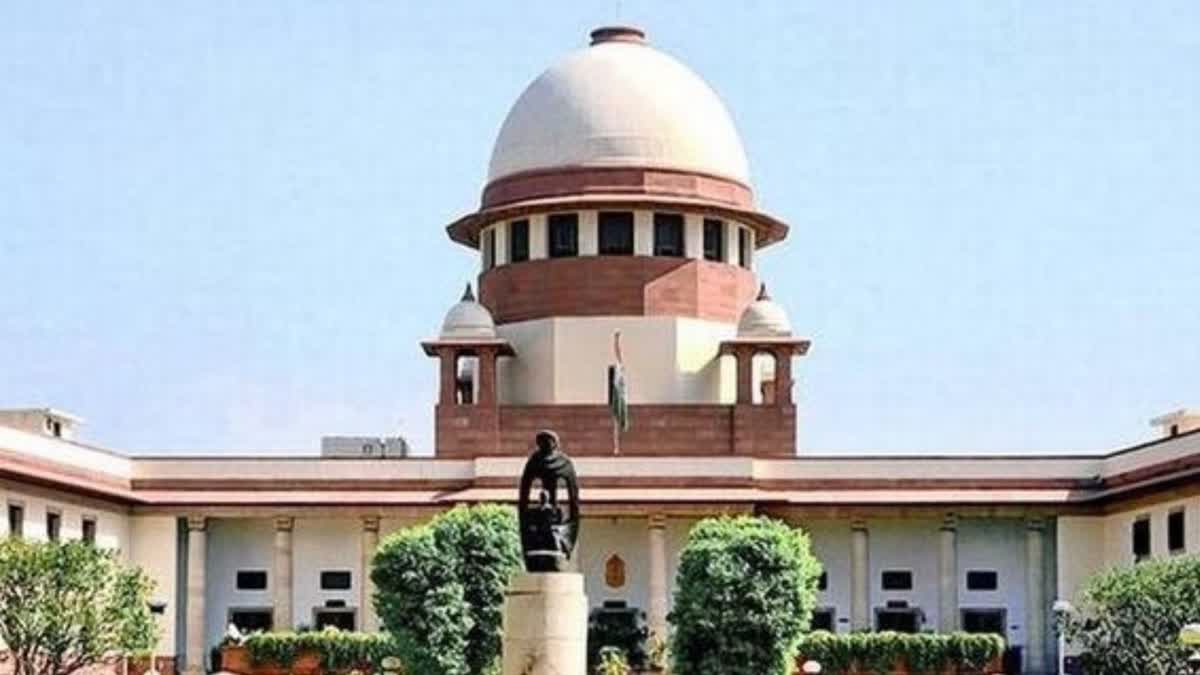New Delhi: The Supreme Court on Wednesday said an attempt must be made to separate truth from falsehood and where such separation is impossible, there cannot be a conviction, while acquitting two persons, who had suffered incarceration for 10 years’, in a murder case.
A bench comprising justices Sanjay Kumar and Aravind Kumar said that the appellants, Saheb and Sitaram Pandurang Gabare, have suffered 10 years’ incarceration and against the backdrop of the lacunae in the prosecution’s case and the shaky evidence adduced in support thereof by the wife of the deceased, “we necessarily have to extend the benefit of doubt to the appellants”.
Both the appellants’ were incarcerated on April 8, 2006, and remained in custody. The apex court on June 30, 2016, had directed their release on bail.
“The appellants are, therefore, acquitted of the offences under Section 148 IPC and Section 302 IPC read with Section 149 IPC. The appeals are accordingly allowed. The bail bonds and sureties furnished by the appellants shall stand discharged”, said the bench.
Justice Kumar, who authored the judgment on behalf of the bench, said though the maxim ‘Falsus in uno, falsus in omnibus’ is only a rule of caution and has not assumed the status of a rule of law in the Indian context, an attempt must be made to separate truth from falsehood and where such separation is impossible, there cannot be a conviction, citing Narain vs. State of M.P (2004), and added, “we find that to be so in the case on hand”.
The incident occurred during evening on April 8, 2006, and the deceased Madhavrao Krishnaji Gabare and his family members: his wife, Janakibai Gabare, their son, Ganesh, and their daughter-in-law, Annapurnabai, and others, were attacked by the accused with axes and sticks at the residence of the deceased in Village Singi.
On Janakibai Gabare’s complaint, an FIR was registered. The deceased was stated to have expired on the spot and nine other persons were said to have been injured during the incident. The cause for the altercation was stated to be political rivalry. The deceased, as per his widow, was the Sarpanch of the village about 15 years prior to the incident and since then, Khemaji and Sambhaji, two of the accused, were on inimical terms with him.
Thereafter, Laxmibai, the wife of the nephew of the deceased, became the sarpanch of the village, leading to further animosity. Significantly, both Khemaji and Sambhaji were the nephews of the deceased being the sons of his brothers, Maroti and Deorao.
Twenty-two persons were accused of the murder of Madhavrao Krishnaji Gabare. The trial court held nine of them guilty. The high court sustained the conviction of three accused and acquitted the remaining six accused on the ground that the charges levelled against them were not specific in relation to the injuries inflicted on the deceased and other injured persons. Saheb and Sitaram Pandurang Gabare moved the apex court against their conviction and the third accused did not file an appeal.
According to the widow, Janakibai, there was sufficient moonlight to identify all the accused and the weapons that they used during the attack. Fifteen witnesses, in all, were examined by the prosecution to bring home the guilt of the accused.
“We are conscious of the fact that Madhavrao Krishnaji Gabare was brutally murdered in his own house on April 8, 2006, but the guilt of those responsible for his murder has to be proved beyond reasonable doubt. All that the defence needs to establish is the existence of reasonable doubt for the accused to be given the benefit thereof”, said Justice Kumar.
The guilt of the appellants’ hinged solely upon the testimony of the widow of the deceased and the high court discarded the other so-called eye-witnesses in the case.
Justice Kumar said the juxtaposition of her deposition before the trial court and her initial complaint clearly demonstrate that Janakibai embellished her narration of how the attack occurred, resulting in a lot of inconsistencies.
On the one hand, she stated that Chandu, accused No. 13, was holding an axe and was one of the persons who attacked with an axe, but on the other, she stated that Chandu caught hold of the hands of the deceased as soon as the accused came to their house, which would mean that he was unarmed.
The bench said the contradictions in her story would raise reasonable doubt and her evidence is placed wholly in the realm of uncertainty and no credence can be given to her solitary testimony on any aspect.
“Picturing a scenario where twenty-two persons entered into the premises armed with axes and sticks on a dark night, even if dimly lit by moonlight, it is difficult to believe that, in the melee that ensued, any person who was under attack would be in a position to identify, clearly and with certainty, as to who was assaulting whom and with what weapon”, said the bench.



